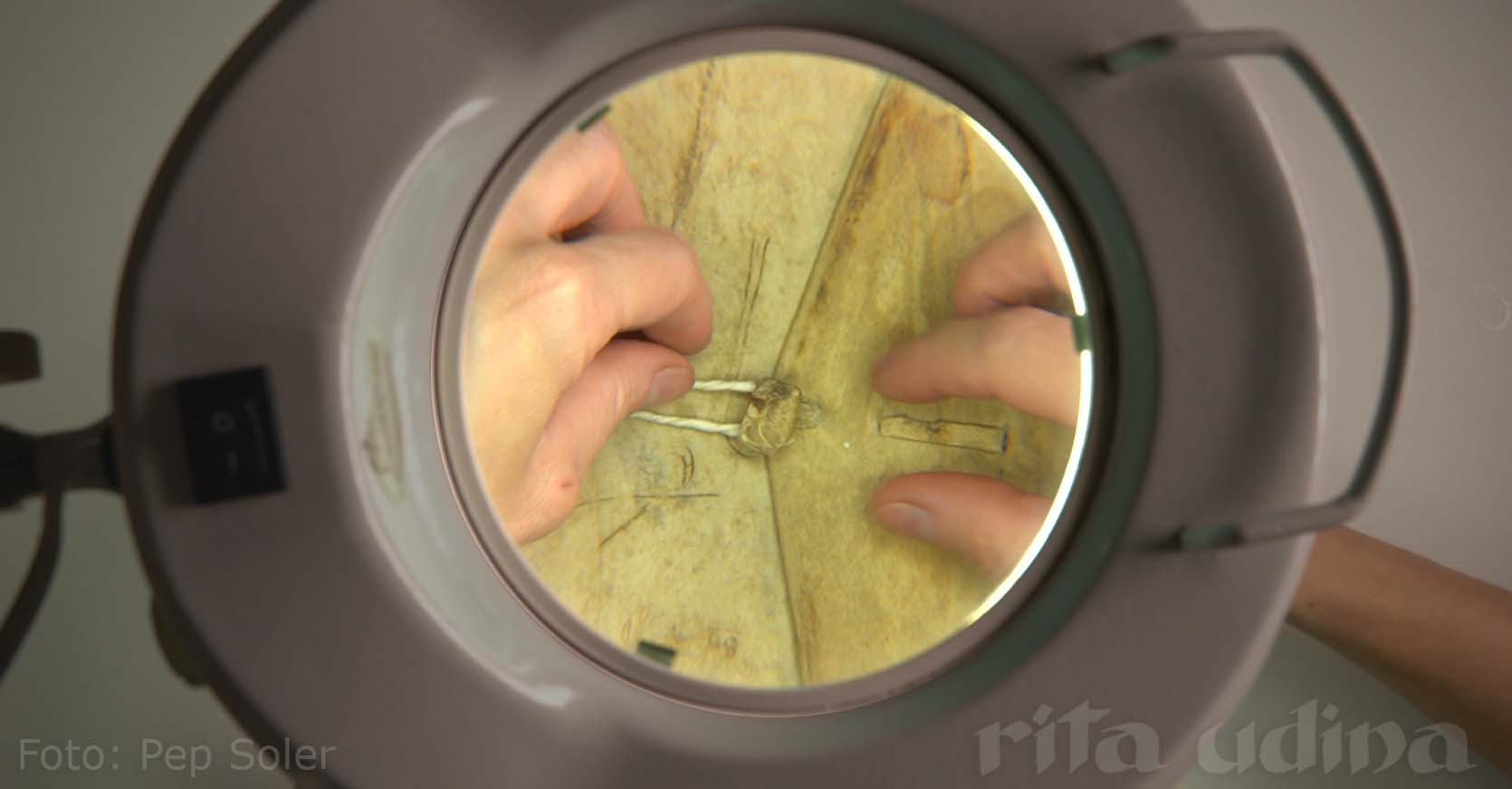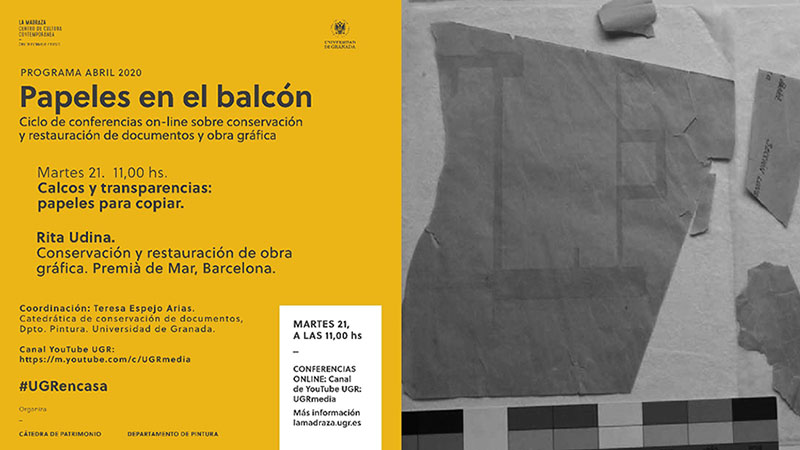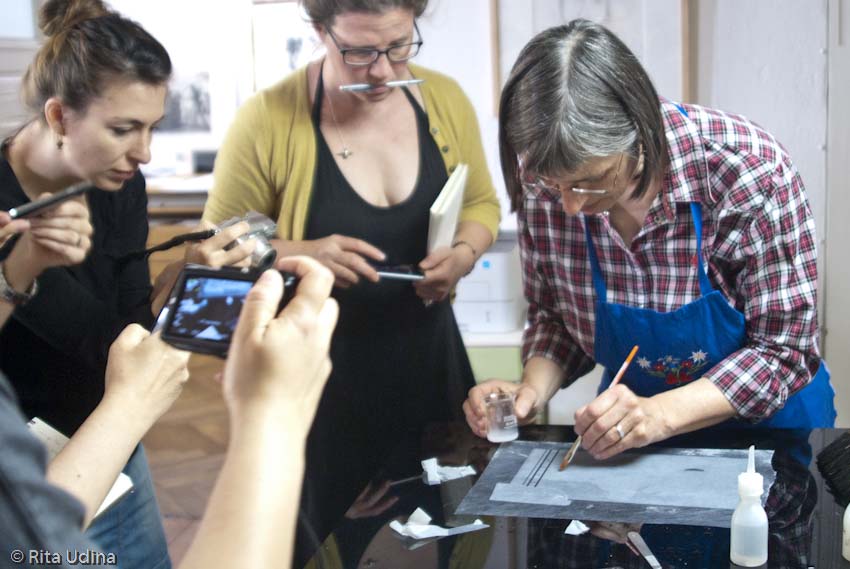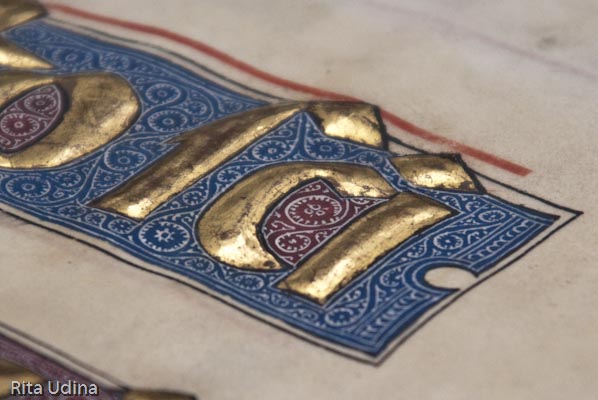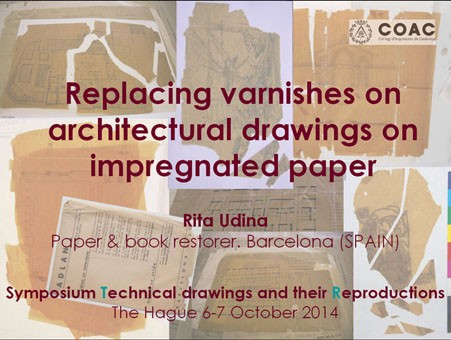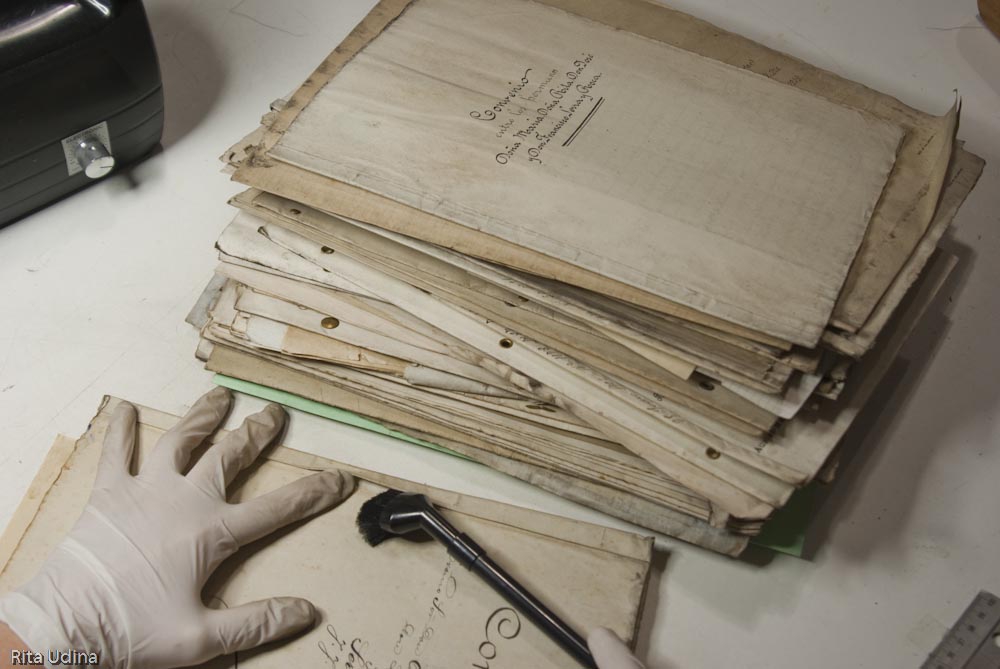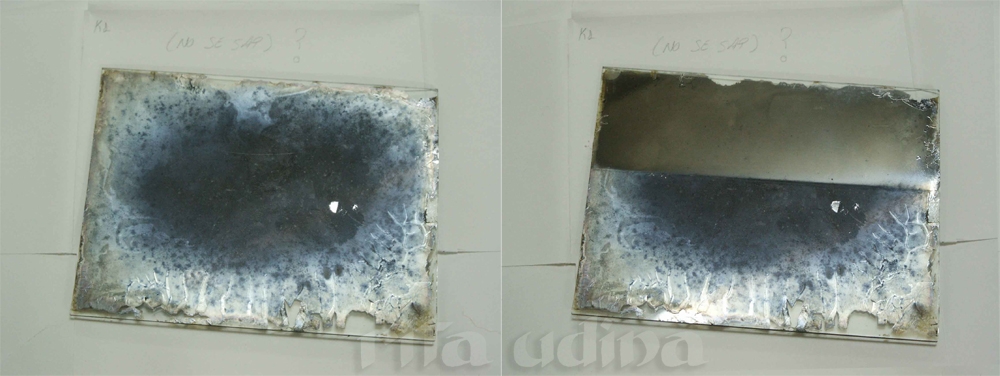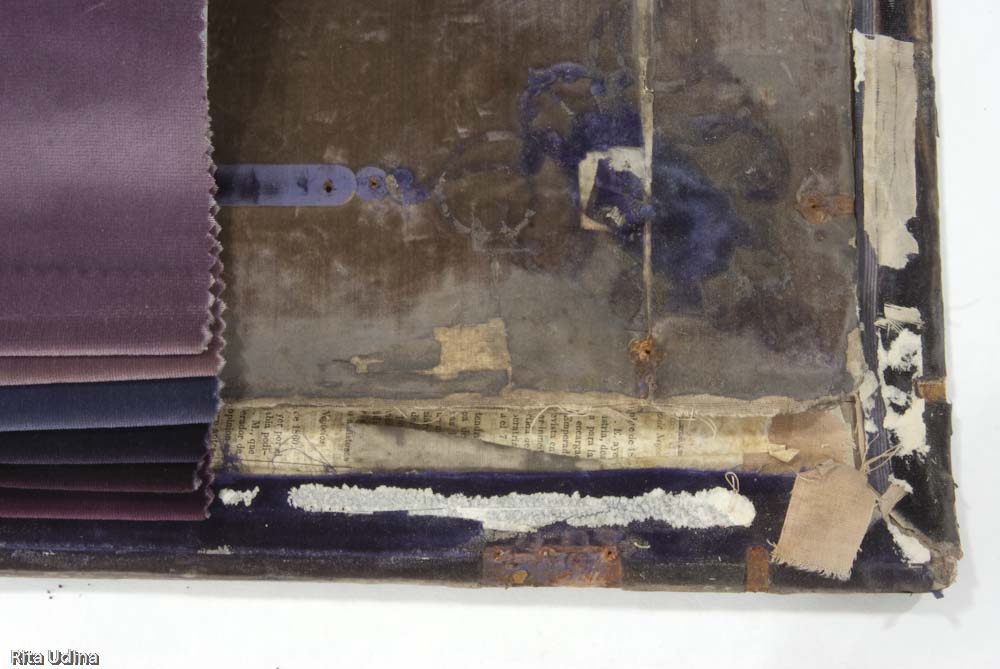Housing as a (quite desperate) conservation resource
Some artwork does not allow conservators to obtain the results we would like to, no matter how much we struggle with it.
That is the case of a fragmented tracing paper beautifully drawn with a nice cocktail of pencil, ballpoint pen, felt-tip pen and other bleeding inks. All seasoned with loads of tape on the tears to hold the fragments together. Charming object, indeed!
It is an architectural drawing from the collection of the Architect’s Association of Catalonia (CoAC). It was traced by Fernando Higueras, an acknowledged Spanish architect whose work is now shown in the exhibition Fernando Higueras. From the origin, at Museo ICO (Madrid, Spain). This genius architect (1930-2008) is the author of highlight buildings in Spain, one of them the very national Institute for Cultural Heritage of Spain (IPCE, Instituto del Patrimonio Cultural de España), where I have spent very enlightening moments.
The drawing I was asked to restore was not depicting IPCE but a sketch for the 1969 international Montecarlo architectural competition, restricted to a few selected architects from all the world. It was thoroughly wrinkled and the tears and fragments had been formerly and massively repaired with translucent “magic tape”. Tapes wouldn’t have been much visible if it weren’t that the lines of the drawing didn’t match on each side of the tear , due to an impetuous and vehement mending task.
Anyway, at the studio the tapes were carefully removed (see video below). After that, the tears and loose pieces were mended again (this time in the right place).
Since green felt-tip pen bled in water and blue in ethanol and other solvents, I decided to avoid any adhesive which had a minimum content of liquid, so my choice was Filmoplast P, an acrylic-based pressure sensitive tape which will not oxidize nor yellow, and is translucent as the paper. These sort of tapes are never my first option regarding consolidation, but as I suggested in the title, I was quite desperate with so much bleeding.
And then, the flattening. That has been a really tricky issue because of the exceedingly bleeding felt-tip pens. I locally moisturized the paper in the blank areas, and tried to flatten under tension with magnets. Just my luck, even if it did flatten, after removing the magnets the paper wrinkled back. The exhibition deadline was approaching, and my only realistic idea was to keep the tension to prevent the damn paper from going back to its ruinous previous state.
I made some Japanese tissue bands, which I pasted along the edges of the tracing paper (see image below), and then insert these bands through cleaveges on the conservation board. These incisions were also distributed along the edge of the artwork, only 2 or 3 mm far from it.
Flattening under tension with magnets.
Then the bands were pasted on the back side of the board with starch paste (image above). If the drawing hadn’t had such a capricious shape the incisions would have not been necessary [1] and it would have been easier and nicer. That was the way to make it look somehow floating on the board and still maintain this bit of tension. The board can be kept as a conservation folder once the exhibition is over, or it can be easily removed.
I never thought I would be saved by the bell with a housing… but, there it is, go and visit the exhibition, and compare with the previous state, which is the proud cover of the catalogue.
Acknowledgement:
Fundación ICO, for making this conservation treatment possible, CoAC (Col·legi d’Arquitectes de Catalunya), for trusting me for the conservation of beautiful and challenging drawings of all sorts.
Related content:
Fernando in person explains the not executed project in this interesting video (in which the plan appears already quite damaged, but still less fragmented than it arrived at the studio):
Footnotes:
[1] Probably folding the bands over the edge of the board, similar to the solution on the Sorolla sketches.
Related blog posts:
Filter post by:
Housing as a (quite desperate) conservation resource
Some artwork does not allow conservators to obtain the results we would like to, no matter how much we struggle with it.
That is the case of a fragmented tracing paper beautifully drawn with a nice cocktail of pencil, ballpoint pen, felt-tip pen and other bleeding inks. All seasoned with loads of tape on the tears to hold the fragments together. Charming object, indeed!
It is an architectural drawing from the collection of the Architect’s Association of Catalonia (CoAC). It was traced by Fernando Higueras, an acknowledged Spanish architect whose work is now shown in the exhibition Fernando Higueras. From the origin, at Museo ICO (Madrid, Spain). This genius architect (1930-2008) is the author of highlight buildings in Spain, one of them the very national Institute for Cultural Heritage of Spain (IPCE, Instituto del Patrimonio Cultural de España), where I have spent very enlightening moments.
The drawing I was asked to restore was not depicting IPCE but a sketch for the 1969 international Montecarlo architectural competition, restricted to a few selected architects from all the world. It was thoroughly wrinkled and the tears and fragments had been formerly and massively repaired with translucent “magic tape”. Tapes wouldn’t have been much visible if it weren’t that the lines of the drawing didn’t match on each side of the tear , due to an impetuous and vehement mending task.
Anyway, at the studio the tapes were carefully removed (see video below). After that, the tears and loose pieces were mended again (this time in the right place).
Since green felt-tip pen bled in water and blue in ethanol and other solvents, I decided to avoid any adhesive which had a minimum content of liquid, so my choice was Filmoplast P, an acrylic-based pressure sensitive tape which will not oxidize nor yellow, and is translucent as the paper. These sort of tapes are never my first option regarding consolidation, but as I suggested in the title, I was quite desperate with so much bleeding.
And then, the flattening. That has been a really tricky issue because of the exceedingly bleeding felt-tip pens. I locally moisturized the paper in the blank areas, and tried to flatten under tension with magnets. Just my luck, even if it did flatten, after removing the magnets the paper wrinkled back. The exhibition deadline was approaching, and my only realistic idea was to keep the tension to prevent the damn paper from going back to its ruinous previous state.
I made some Japanese tissue bands, which I pasted along the edges of the tracing paper (see image below), and then insert these bands through cleaveges on the conservation board. These incisions were also distributed along the edge of the artwork, only 2 or 3 mm far from it.
Flattening under tension with magnets.
Then the bands were pasted on the back side of the board with starch paste (image above). If the drawing hadn’t had such a capricious shape the incisions would have not been necessary [1] and it would have been easier and nicer. That was the way to make it look somehow floating on the board and still maintain this bit of tension. The board can be kept as a conservation folder once the exhibition is over, or it can be easily removed.
I never thought I would be saved by the bell with a housing… but, there it is, go and visit the exhibition, and compare with the previous state, which is the proud cover of the catalogue.
Acknowledgement:
Fundación ICO, for making this conservation treatment possible, CoAC (Col·legi d’Arquitectes de Catalunya), for trusting me for the conservation of beautiful and challenging drawings of all sorts.
Related content:
Fernando in person explains the not executed project in this interesting video (in which the plan appears already quite damaged, but still less fragmented than it arrived at the studio):
Footnotes:
[1] Probably folding the bands over the edge of the board, similar to the solution on the Sorolla sketches.






